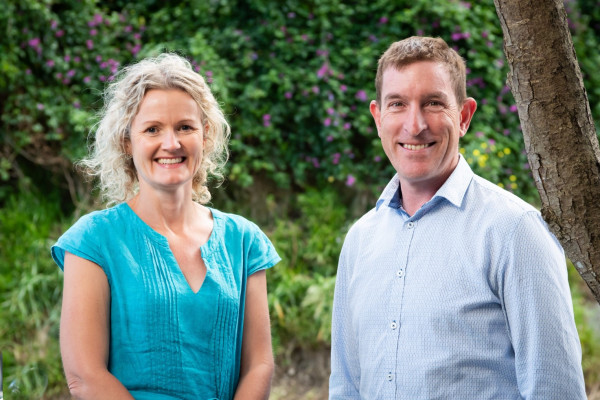Can rimu fruit save the kākāpō?

Dr Janet Pitman and Dr Simon Hinkley, both from Victoria University of Wellington, will investigate whether rimu fruit is a ‘super-food’ that triggers breeding in kākāpō. Their work could have implications for conservation efforts attempting to boost the reproductive success of this critically-endangered native parrot
Published on 5 November 2019
Kākāpō are a taonga species native to Aotearoa. Tragically, this quirky flightless parrot is at serious risk of extinction, with a remaining population of just over 200. Conservation efforts are hampered by infertility and egg hatching failures. Adding to these difficulties, kākāpō only breed every 2-5 years, coinciding with mass fruiting of rimu trees. Although a trigger for kākāpō breeding seems to exist in rimu fruit, the exact nature of this is unknown.

Janet Pitman and Simon Hinkley. Photo: Colin McDiarmid, VUW Image services.
Dr Pitman and Dr Hinkley have been awarded a Te Pūtea Rangahau a Marsden grant to investigate the link between kākāpō breeding and mass rimu fruiting. Previously they have found that hormone-like compounds similar to oestrogen are present in rimu fruit. Dr Pitman and Dr Hinkley hypothesise that when kākāpō eat rimu fruit, the compounds in them may trigger breeding by raising circulating oestrogen levels and promoting egg yolk protein and sperm production. Using a multidisciplinary approach, they will explore this possibility through a diverse range of experiments. These experiments will isolate the plant hormone in rimu fruit, measure its response in kākāpō, and identify the genes responsible for poor breeding in kākāpō. The project will greatly benefit from a close collaboration with the recent Kākāpō 125 project, for which the DNA of every living kākāpō was sequenced.
The knowledge developed from this study could underpin the development of a natural therapeutic aid to assist in the kākāpō’s fight against extinction.
